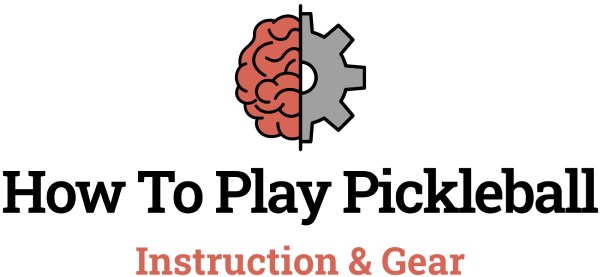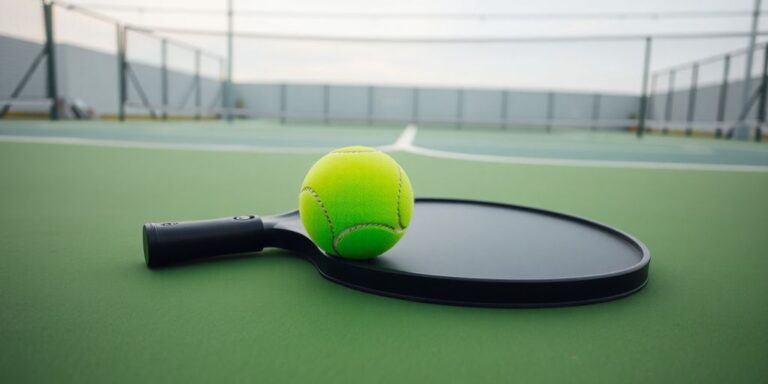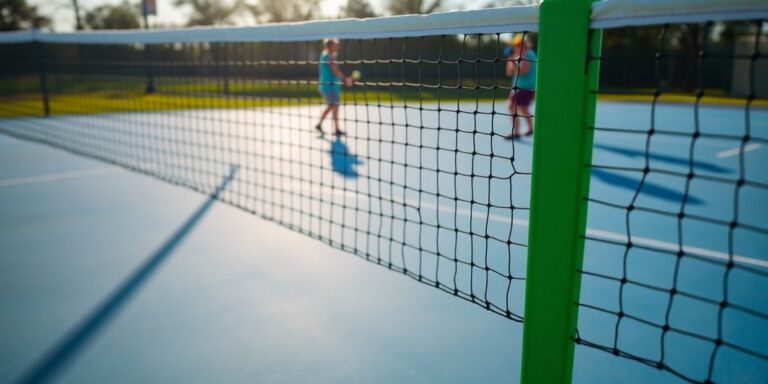Pickleball and tennis have been staples in the world of racket sports, each with its own unique charm and following. As we head into 2025, both sports continue to grow and evolve, capturing the interest of players and fans alike. But which one truly stands out? In this article, we dive into the dynamics of pickleball vs tennis, exploring their rise, gameplay differences, cultural significance, and more. Let’s see what makes each sport tick and how they stack up against each other.
Key Takeaways
- Pickleball’s popularity is skyrocketing, especially in the U.S., drawing in a diverse range of players.
- Tennis remains a global giant with a rich history and a strong professional circuit.
- Both sports offer distinct gameplay experiences, with pickleball being more accessible and tennis demanding more physical endurance.
- The economic impact of both sports is significant, with opportunities for clubs and sponsors growing.
- Looking ahead, both sports have the potential to coexist and thrive, possibly even sharing Olympic spotlight in the future.
The Rise of Pickleball and Tennis in 2025
Popularity Trends in the United States
In 2025, pickleball is making waves across the United States, with its player base expanding rapidly. The sport’s growth is nothing short of phenomenal, with the number of players skyrocketing from 3.3 million in 2018 to a staggering 13.6 million by 2023. This 311% increase outpaces many traditional sports, capturing the attention of both young and old. High school leagues are sprouting up, drawing younger generations into the fold and reshaping recreational activities.
Tennis, on the other hand, remains a stalwart in American sports culture. With 23.6 million players, it continues to hold its ground despite the pickleball surge. The two sports are not just competitors but also collaborators, with many facilities offering both to meet diverse community interests.
Global Expansion and Influence
Globally, both pickleball and tennis are experiencing significant growth. Pickleball, once a niche American pastime, is now spreading internationally, thanks to its accessible nature and low cost of entry. Countries in Europe and Asia are seeing a rise in pickleball clubs, fueled by its fun and social aspects.
Tennis maintains its global appeal, revered for its competitive spirit and storied history. Major tournaments continue to draw international audiences, and the sport’s influence remains strong in countries where tennis legends have paved the way.
Impact on Local Communities
Locally, the rise of pickleball and tennis is creating vibrant community hubs. Pickleball courts are popping up in neighborhoods, converting unused spaces into lively centers of activity. The sport’s social nature encourages community building, drawing people together in a fun and engaging way.
Tennis clubs are also adapting, often integrating pickleball to cater to broader demographics. This blend of sports fosters a unique community spirit, where players of all ages and skill levels can enjoy the benefits of racket sports. The shared facilities encourage interaction and camaraderie, enhancing the social fabric of local communities.
Comparing Gameplay: Pickleball vs Tennis
Court Size and Layout Differences
When it comes to the court, pickleball courts are smaller than tennis courts, which leads to a faster-paced game requiring strategic positioning from players. A standard pickleball court is about the size of a badminton court, while a tennis court is significantly larger. This means that tennis players often have to cover more ground, engaging in longer rallies that test endurance and speed. In contrast, pickleball’s compact size allows for quicker exchanges and demands precise shot placement.
Equipment and Gear
The equipment used in both sports is quite distinct. Tennis players wield strung rackets and hit a pressurized ball, which allows for powerful serves and groundstrokes. Pickleball, on the other hand, uses solid paddles and a perforated plastic ball, which floats more slowly through the air. This difference in gear affects the style of play, with tennis focusing on power and pickleball emphasizing control and finesse.
Physical Demands and Fitness
Tennis is often seen as more physically demanding, requiring players to sprint across larger courts and engage in prolonged rallies. The sport is known for its athleticism and endurance requirements. Pickleball, while still providing a good workout, tends to be less taxing on the body. Its smaller court size and slower ball speed make it more accessible, particularly for older players or those looking for a less intense physical challenge.
The choice between pickleball and tennis often comes down to personal preference: do you crave the intense physicality and strategic depth of tennis, or the quick, social, and tactical nature of pickleball? Both sports offer unique experiences that cater to different tastes and fitness levels.
Cultural Impact of Pickleball and Tennis

Media Coverage and Public Perception
The media plays a huge role in shaping how we see sports. Pickleball’s rise in popularity has been meteoric, and it’s getting a lot of attention on TV and social media. People love its accessibility and fun vibe. Tennis, on the other hand, has always been seen as a prestigious sport, with a long history of epic matches and legendary players. But now, with more pickleball courts popping up, tennis is facing some stiff competition for airtime.
Celebrity Endorsements and Influence
Celebrities have a knack for making anything cool, and racket sports are no exception. Big names in sports and entertainment are jumping on the pickleball bandwagon, hosting charity events and even investing in pickleball leagues. Tennis, of course, has its own star-studded history, with famous players like Serena Williams and Roger Federer influencing generations. But as more celebs pick up pickleball paddles, the sport is gaining a trendy edge.
Community Building and Social Aspects
Both sports have a way of bringing people together, but they do it differently. Tennis clubs have long been a staple in communities, offering a place for people to play, socialize, and compete. However, the rise of pickleball is creating new social hubs. Its casual nature makes it perfect for spontaneous matches and friendly gatherings. Plus, with its smaller courts and less intense gameplay, it’s drawing in folks who might not have considered picking up a racket before.
As pickleball continues to grow, it’s not just challenging tennis on the courts but also in the hearts of communities. The sport’s easy-going nature and low entry barrier are making it a favorite for many, suggesting a cultural shift in how we view racket sports.
Economic Factors: Pickleball vs Tennis
Cost of Participation and Equipment
When it comes to picking up a racket sport, the cost can be a big factor. Pickleball is often seen as the more budget-friendly option. The equipment needed for pickleball is generally cheaper than tennis. A decent pickleball paddle can cost around $50 to $150, while a good tennis racket might set you back $100 to $300. Plus, pickleball balls are less pricey than tennis balls.
- Pickleball paddle: $50 – $150
- Tennis racket: $100 – $300
- Pickleball balls: Less expensive
For beginners or those just wanting to try out a new sport, pickleball’s lower costs make it more accessible.
Revenue Generation for Clubs
Clubs are catching onto the pickleball craze, and why not? The sport’s popularity is a goldmine. With more people wanting to play, clubs are converting tennis courts into pickleball courts. This means more players can fit into the same space, which translates to more memberships and more revenue.
- More players per court
- Increased memberships
- Higher revenue potential
Clubs are finding that they can attract a broader range of players by offering pickleball, which is appealing to both younger and older crowds.
Sponsorship and Advertising Opportunities
Sponsorships and advertising are following the trend, with companies eager to tap into the growing pickleball market. Brands are seeing pickleball as a fresh opportunity to reach new audiences. Meanwhile, tennis continues to enjoy its established sponsorship deals, but the surge in pickleball interest is undeniable.
- New sponsorship deals in pickleball
- Established tennis sponsorships
- Growing advertising interest in pickleball
As pickleball continues to grow, it’s not just about the game itself but the community it builds and the economic opportunities it brings. The sport’s rise is transforming how clubs operate and how sponsors view racket sports.
While tennis still holds its ground with loyal fans and traditional prestige, pickleball’s rise offers exciting new prospects in the world of racket sports. Pickleball’s expansion is not just a trend; it’s reshaping the landscape of sports economics.
Future Prospects: Pickleball and Tennis

Potential Olympic Inclusion
The buzz around pickleball has grown so loud that whispers of it becoming an Olympic sport are starting to sound more like shouts. With its easy entry and growing fan base, it’s not hard to see why. Imagine the thrill of seeing pickleball on the global stage, rubbing shoulders with traditional giants like tennis. The potential for Olympic inclusion could skyrocket pickleball’s popularity and bring more attention to tennis as well.
Innovations in Training and Strategy
As both sports evolve, new training methods and strategies are emerging. For instance, tennis players are incorporating elements from pickleball, like quick reflexes and agility, into their routines. This cross-pollination of skills is making players more versatile. Meanwhile, technology is playing a role too, with tools like virtual reality training and advanced analytics shaping how athletes prepare for matches.
Predictions for 2030
Looking ahead to 2030, both sports have bright futures. Tennis will likely maintain its status as a prestigious global sport, continuing to draw in fans with its high-stakes tournaments and legendary players. On the other hand, pickleball is expected to continue its rapid rise, becoming a household name worldwide. The two sports might even collaborate more, hosting joint events and tournaments to celebrate their shared love of the game. As we move forward, the landscape of racket sports is set to be more diverse and exciting than ever.
Challenges and Opportunities in Racket Sports
Space and Resource Allocation
With the rise of pickleball and padel, space allocation has become a significant issue for clubs. Tennis courts are being converted to accommodate these newer sports because you can fit multiple pickleball or padel courts in the space of one tennis court. This shift poses a challenge for traditional tennis facilities, which must adapt to the growing demand for diverse racket sports while maintaining their core offerings. Balancing these needs requires strategic planning and innovation.
Cross-Pollination of Skills
The intersection of tennis, padel, and pickleball presents a unique opportunity for players to develop a broader skill set. Each sport emphasizes different aspects, such as tennis’s powerful serves, padel’s strategic wall play, and pickleball’s quick reflexes and precise shot placement. This cross-pollination can enhance players’ abilities, making them more versatile athletes. Clubs can capitalize on this by offering training programs that incorporate elements from all three sports.
Balancing Tradition and Modernity
While tennis has long been established as the dominant racket sport, the emergence of pickleball and padel challenges its supremacy. This evolution requires a delicate balance between respecting the traditions of tennis and embracing the innovations brought by newer sports. Tennis clubs must find ways to integrate these changes without alienating their traditional base. Embracing new sports can attract a wider audience, providing opportunities for growth and increased engagement across the racket sports community.
The landscape of racket sports is evolving, with new challenges and opportunities arising from the popularity of emerging games like pickleball and padel. By adapting to these changes, the industry can thrive, offering diverse experiences for players of all skill levels.
Pickleball and Tennis: A Harmonious Coexistence?
Shared Facilities and Court Conversions
With the rise of pickleball’s popularity, many tennis courts are being converted to accommodate both sports. This trend is driven by the need to optimize space and cater to the growing demand for pickleball. Tennis clubs are increasingly adopting dual-use courts, allowing both sports to thrive. While some purists might resist, this shift offers a practical solution to space constraints and fosters a sense of community among players of both sports.
Player Transition Between Sports
Many tennis players are finding themselves drawn to pickleball due to its social atmosphere and lower physical demands. This transition is often seamless, as the skills from tennis—like hand-eye coordination and strategic thinking—translate well to pickleball. Players enjoy the variety and the chance to engage in a less intense, yet equally enjoyable, racket sport. This flow between sports enriches the player’s experience and broadens their athletic skills.
Collaborative Events and Tournaments
Joint events and tournaments are becoming more common, bringing together enthusiasts from both sports. These events not only highlight the unique aspects of each game but also foster camaraderie among participants. They offer a platform for players to showcase their skills and for fans to appreciate the diversity of racket sports. Such collaborations pave the way for a more inclusive sports culture, where pickleball and tennis coexist and complement each other.
The blending of pickleball and tennis represents a new era in racket sports, one where shared spaces and mutual respect lead to a richer sporting experience for everyone.
Are you curious about how pickleball and tennis can thrive together? Discover the unique ways these two sports complement each other and how you can benefit from both. Visit our website to learn more and join a community that celebrates both games!
Conclusion
So, where does that leave us in the pickleball versus tennis debate? Well, it seems like both sports have carved out their own niche. Tennis, with its rich history and global fanbase, isn’t going anywhere. It’s still the go-to for those who love a good challenge and the thrill of a long rally. On the flip side, pickleball is making waves with its easy entry and social vibe, drawing in folks who might find tennis a bit too intense. In 2025, it looks like there’s room for both on the court. Whether you’re swinging a racket or a paddle, the important thing is to get out there and enjoy the game. After all, isn’t that what sports are all about?
Frequently Asked Questions
What is the main difference between pickleball and tennis?
Pickleball is played on a smaller court with a lower net, using paddles and a plastic ball with holes. Tennis is played on a larger court with a higher net, using strung rackets and a pressurized ball.
Is pickleball easier to learn than tennis?
Yes, many people find pickleball easier to learn because it requires less running and has simpler rules, making it more accessible for beginners.
Can tennis players easily switch to pickleball?
Tennis players can switch to pickleball, but they might need to adjust their playing style due to the differences in court size, equipment, and game pace.
Why is pickleball becoming so popular?
Pickleball is gaining popularity because it’s easy to learn, fun to play, and suitable for all ages. It also requires less space, allowing more courts to fit in one area.
Are there professional leagues for pickleball?
Yes, there are professional pickleball leagues and tournaments that have been increasing in number and popularity, attracting players from around the world.
Will pickleball be in the Olympics?
There is growing interest in including pickleball in the Olympics, but it has not yet been officially added to the Olympic games.




